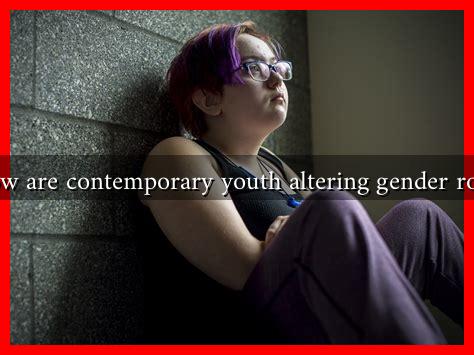-
Table of Contents
How Are Contemporary Youth Altering Gender Roles?
In recent years, the landscape of gender roles has undergone significant transformation, largely driven by contemporary youth. This generation, often referred to as Gen Z and younger millennials, is challenging traditional norms and redefining what it means to be male or female in society. Through activism, social media, and a commitment to inclusivity, these young individuals are reshaping perceptions of gender in profound ways.
The Rise of Gender Fluidity
One of the most notable shifts in contemporary youth culture is the increasing acceptance of gender fluidity. Unlike previous generations, where gender was often viewed as a binary concept, today’s youth recognize a spectrum of gender identities. This shift is evident in various aspects of life, including:
- Language: Terms like “they/them” as singular pronouns are becoming more widely accepted, allowing individuals to express their gender identity without being confined to traditional labels.
- Fashion: Gender-neutral clothing lines are gaining popularity, with brands like Telfar and Wildfang leading the charge in creating styles that defy traditional gender norms.
- Representation: Media portrayals of non-binary and genderqueer individuals are increasing, providing visibility and validation for those who do not conform to traditional gender roles.
Activism and Advocacy
Contemporary youth are not just passively accepting changes; they are actively advocating for gender equality and inclusivity. Social media platforms like Instagram, TikTok, and Twitter have become powerful tools for activism, allowing young people to share their stories and mobilize for change. Some key movements include:
- Trans Rights: Organizations such as the Human Rights Campaign and GLAAD have seen increased support from youth advocating for transgender rights, including healthcare access and legal recognition.
- Feminism: The #MeToo movement, which gained momentum in 2017, has been championed by young activists who are demanding accountability for sexual harassment and assault.
- Intersectionality: Today’s youth are increasingly aware of how race, class, and sexuality intersect with gender, leading to a more nuanced understanding of social justice.
Changing Family Dynamics
As gender roles evolve, so do family structures. Contemporary youth are redefining what it means to be a parent, partner, and caregiver. Some trends include:
- Shared Parenting: More couples are embracing shared parenting responsibilities, challenging the traditional notion that caregiving is primarily a woman’s role.
- Single Parenthood: The stigma surrounding single parenthood is diminishing, with many young people choosing to raise children independently or in non-traditional family setups.
- Work-Life Balance: Young professionals are prioritizing work-life balance, advocating for flexible work arrangements that allow for greater involvement in family life.
Education and Career Choices
Contemporary youth are also challenging gender norms in education and career paths. The traditional expectations of men pursuing STEM fields and women gravitating towards humanities are being dismantled. Key observations include:
- Women in STEM: Initiatives aimed at encouraging young women to enter STEM fields are gaining traction, with organizations like Girls Who Code making significant strides.
- Men in Caregiving: More men are entering fields traditionally dominated by women, such as nursing and early childhood education, reflecting a shift in societal expectations.
- Entrepreneurship: Young people are increasingly starting their own businesses, often prioritizing social impact over traditional profit motives, regardless of gender.
Conclusion
Contemporary youth are at the forefront of altering gender roles, challenging long-standing norms and advocating for a more inclusive society. Through their activism, changing family dynamics, and redefined career paths, they are paving the way for future generations to embrace a broader understanding of gender. As society continues to evolve, it is crucial to recognize and support these changes, fostering an environment where all individuals can express their identities freely and authentically.
For further reading on the impact of youth on gender roles, you can explore resources from organizations like Human Rights Campaign and GLAAD.

